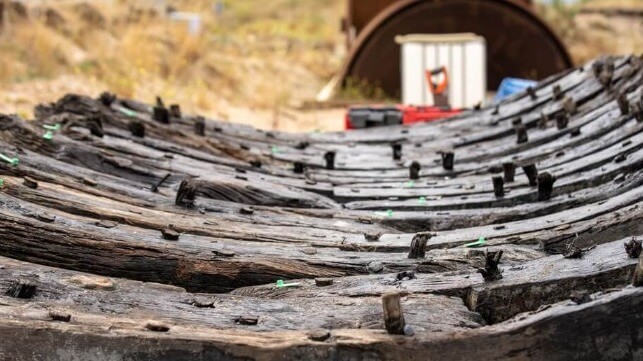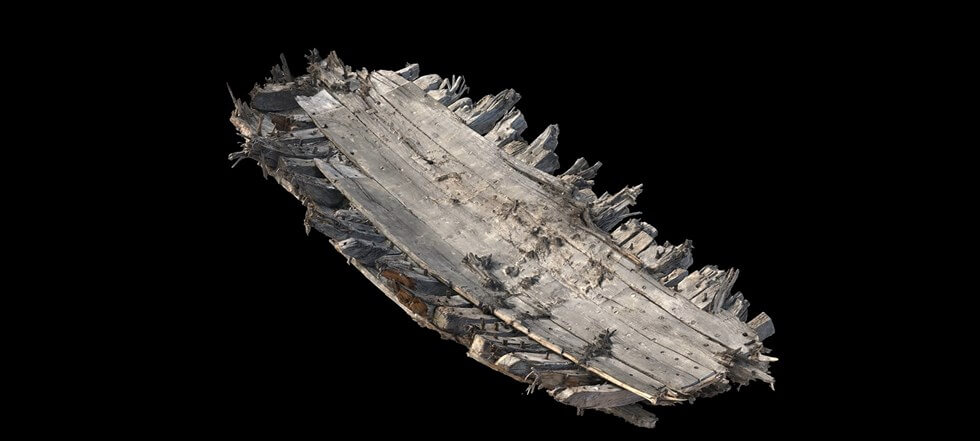Quarry Workers Find Rare 16th-Century Shipwreck

A crew of quarry workers have unearthed the remains of a ship from the Elizabethan period in Kent, England, a rare archaeological find.
Workers with British cement company Cemex were dredging gravel out of a lake on the Dungeness headland when they stumbled on the remains of a wooden ship.
The location is about 1,000 feet inland, but archaeologists believe that the site was once right on the coastline. The vessel could have been wrecked or abandoned on the former shoreline, and then gradually buried in sediment as time passed and the headland expanded.
With support from Historic England, a team from Wessex Archaeology has studied the wreck site in detail. The ship's name has not been identified, but the method of its construction and dendrochronological dating of its timbers confirm that it was built in the period from about 1558-1580.
Very few wrecks from this formative era in British shipbuilding still exist. During this time period, shipyards were transitioning from the clinker construction method of overlapping planks (like Viking vessels) to carvel construction with parallel planks. The wreck has no iron fasteners, but is held together entirely with wooden dowels (treenails).
The late 1500s were also an important period for British maritime trade and exploration. During this era, British merchant ships began to trade to and from the Baltic, establishing relationships in the Hanseatic League's seaports. Sir Francis Drake's famed circumnavigation voyage took place in this time period, as well as some of the first English colonization voyages to North America. It was also the era of the launch of the powerful English trading monopolies, including the Muscovy Company, the Levant Company and the East India Company.

Copyright Wessex Archaeology / Historic England
The wreck is one of a handful of ships from this period, along with Henry VIII's famed Mary Rose, and its preservation is of high importance. Using laser scanning and photography, archaeologists from Wessex Archaeology surveyed the entirety of the wreck's remains and have created a 3D model of the structure for further study. Once all the work is completed, the wreck will be returned to the protective sediments where it was found.
"The remains of this ship are really significant, helping us to understand not only the vessel itself but the wider landscape of shipbuilding and trade in this dynamic period. Cemex staff deserve our thanks for recognising that this unexpected discovery is something special and for seeking archaeological assistance," said Antony Firth, Head of Marine Heritage Strategy at Historic England.
